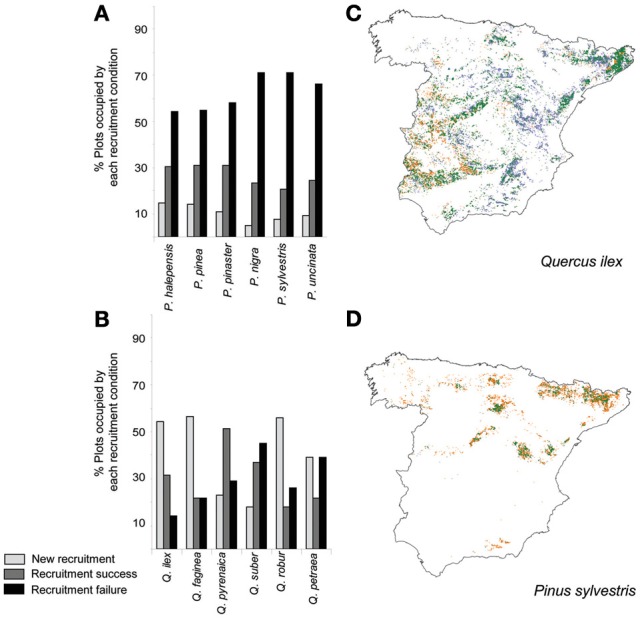Figure 2.

Contrasting large-scale trends in tree recruitment observed in the Iberian peninsula for small saplings (height <30 cm) in Conifers (Pinus) and Angiosperm trees (Quercus). (A) Variation in the percentage of plots with recruitment success (gray), recruitment failure (black) and new recruitment areas (plots without adult trees of the focal species in which small recruits or resprouts were detected) in Pinus species; (B) Variation in the percentage of plots with recruitment success (gray), recruitment failure (black) and new recruitment areas in Quercus species. (C) Spatial trends in recruitment for the dominant species Quercus ilex. Blue areas indicate new recruitment areas (i.e., areas with recruits but absence of adult trees), orange areas illustrate recruitment failure and green areas illustrate recruitment success (i.e., areas characterized by the presence of both adult and small saplings). (D) Spatial trends in recruitment for Pinus sylvestris. Differences between recruitment trends in Pinus and Quercus were significant (see Carnicer et al., 2013a for a detailed statistical test. Average proportion of plots with recruitment failure: F = 16.64, P = 0.002; average proportion of plots with new recruitment: F = 35.04, P = 0.0001). Data were obtained from the Spanish National Forest Inventory, consisting in a regular grid of circular plots at a density of 1 plot/km2.
